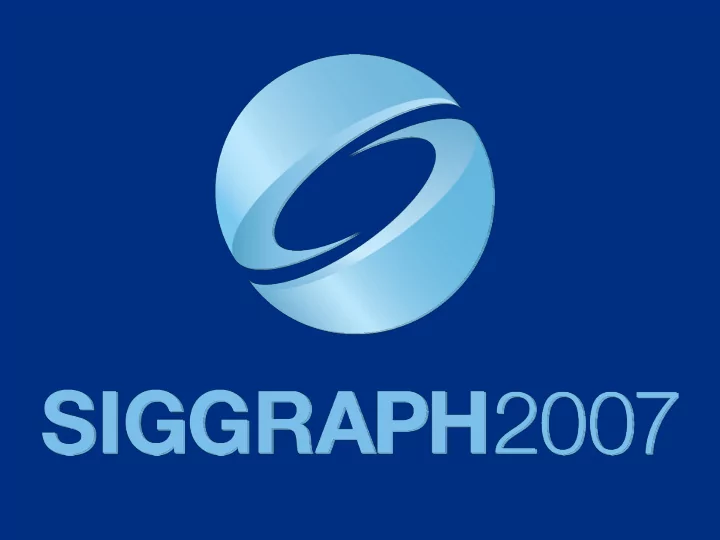

Player-Driven Procedural Texturing Henry Goffin, Grue, Chris Hecker, Ocean Quigley, Shalin Shodhan, Andrew Willmott Maxis, Electronic Arts
Spore: Player-Created Stuff • Want players to be able to create key parts of their game • Pollinate player-created things via servers, so your game is made of both your own creations and others’ • Richer experience, less art work(!)
Game World
Game World
Player-Created Stuff: Creatures
Player-Created Stuff: Buildings
Player-Created Stuff: Cars
Player-Created Stuff: Boats
Player-Created Stuff: Planes
Player-Created Stuff: Hybrids
Problem Area • We let players create their own creatures, huts, buildings, cars, boats, planes... • How do we texture them? • Once we’re done, how do we turn this into a game model?
Previous Work • SSX – Swap in different player meshes, accessories • Sims 2 Bodyshop – Facial morphs – Select clothing: top and bottom texture pages • Need for Speed vehicles – Decals, morphs on many parts • Many more
Texturing: Player Control • Want satisfying player input • Not too detailed – Too tedious for the majority • Not too simplistic – Everyone’s model looks the same – Want to go beyond overall texture layer selection
Two Solutions • Creature/Flora/Cell Texturing – Full brush-driven 3D texture painting – Driven by our effects system rather than a human – Variety by layering different parameterized scripts • “Mineral” Texturing – Repeating textures – Paint regions – Procedural UV’ing
1: Skinpaint • Brushes: diffuse, spec, alpha, bump map – Mesh is uv mapped, for any point on mesh, brush can be splatted into destination texture • Brush selection and position controlled by effect system – “Particles” can be moved over surface using frame adjustment, affected by skeleton – Library of effect scripts
Skinpaint: Early Prototype
2: Procedural UV’ing • Model parts deform (Rigblocks) • Model parts tagged with regions – Use for material and functional areas too • Regions tagged with uv’ing type – Boxmap – Cylinder, sphere, planar, disc • Applied in Vertex Shader • Textures parameterized by two colours
Paint & Proc UV Demo Demo
Player-Created Models In-Game
Problems! • Player-created model is not suitable for game use – Too many meshes (can be many parts) – Too many materials and textures (Parts x regions = a lot of batches) – Efficient rendering on GPU requires minimizing batch count. – No LOD!
Solution #1: Splatter • Generate unique UVs for ‘editor’ model as second uv set. • Render model with clipPosition = uv2 – “Splats” source textures into a single texture sheet – Allows resampling of high-res editor textures into a known-size texture, constant for all models
Unique UVs: Charting • Use face clustering to generate charts quickly – Generates ‘flattish’ chunks of geometry for charting • Optionally run LSCM relaxation on these, otherwise planar project • Use horizon-map-style packer (similar to Levy et al.)
Solution #2: Geometry Pipeline • Single texture page means we can weld all meshes together • Generate LODs by simplification – Vertex decimation, faster than edge-based simplification – Has to handle bones – Has to handle mesh discontinuities due to normals, tangent spaces, texture coordinates – Must minimize discontinuities in output mesh
Ambient Occlusion! • Problem with approaches that don’t involve an entire-skin texture: no dark map. • We generate as a post-pass using GPU (accumulate shadow passes for model) • Visual glue that holds everything together
Baking Details • Desirable that we can do this while game is running – No blocking! • Various chunks written as background jobs, controlled by job manager – Background load all source assets – Bake, then cache results to disk – Graphics assets need to be created in main thread
Baking Demo
Questions?
Recommend
More recommend